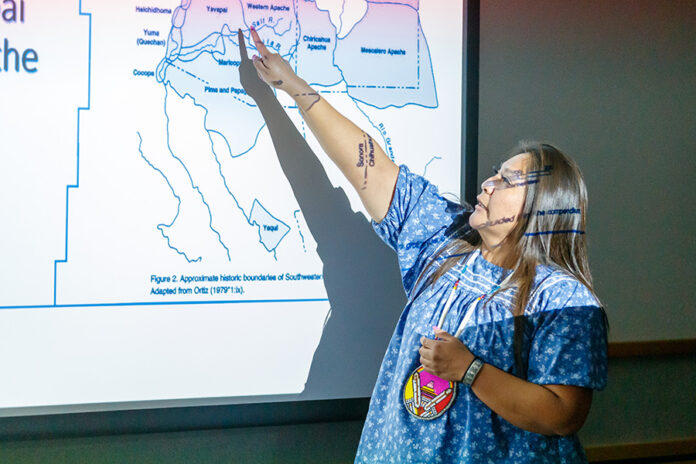The Cottonwood Public Library hosted a lecture on the importance of the Verde River and the designation of Wild and Scenic Rivers on Thursday, March 23.
Members of the Yavapai-Apache Nation were present to speak about the historical and current significance of the Verde River to their two peoples. The speakers argued that the river, which provided water for both drinking and irrigation, was and is still considered a living entity, not a resource or commodity. It has sustained them for generations, so they feel they have a duty in turn to ensure its survival for the future.
The Yavapai-Apache Nation recently established an Environmental Protection Department, which is tasked with collecting water quality samples, riparian restoration, removal of invasive species, reintroducing culturally sensitive plant species, conducting solid waste cleanups, outreach and education, enforcing environmental codes and participating in local efforts to pass legislation, such as the proposed measure designating the Upper Verde as a Wild and Scenic River.
The Nation previously supported the designation of Fossil Creek as Wild and Scenic, which was passed by Congress in 2009.
Ways that visitors can help protect the river include practicing “leave no trace,” using and enjoying the river, supporting local conservation efforts and organizations and sharing information with friends and family.
“This is our home and we will always be here,” Yavapai-Apache Nation Tribal Council Chairwoman Tanya Lewis said. She noted that the tribal lands contracted from around 575,000 acres in the 19th century to 1,800 acres today and are not contiguous.
Luke Koenig, of Wild Arizona, presented a brief history of wilderness protection and conservation acts passed in the United States, beginning with President Ulysses S. Grant’s signing the Yellowstone National Park Protection Act into law in 1872, which created the country’s first national park.
The Organic Act of 1916 subsequently created the National Park Service, establishing a system to preserve selected places, and the Wilderness Act of 1964 created an inter-agency system among the four main public land agencies: The U.S. Forest Service, the U.S. Fish and Wildlife Service, the National Park Service and the Bureau of Land Management.
In 1968, the National Trail System Act created continuous trails within protected corridors, and the same year, the Wild and Scenic Rivers Act was also passed to protect valuable and vulnerable rivers in their free-flowing condition. It was originally passed in response to the growing number of dams and their environmental consequences.
A river can be designated as “Wild and Scenic” either by Congress or by the state. A river is eligible for the designation if it is free flowing and has one or more outstanding remarkable values, including scenery, wildlife, recreation, geology or culture.
The designation protects rivers by preserving their character, maintaining continued public access, ensuring a clean water supply and protecting critical habitat. Designation protects not just the river itself but the riparian corridor as well, which usually averages around a quarter of a mile on each side of the river. Designation does not restrict development on private land, existing grazing practices, existing water rights, recreational access and motorized travel.
Arizona has approximately 90,373 miles of river, of which 57.3 miles are designated as Wild and Scenic, including the Lower Verde River and Fossil Creek. These 57.3 miles represent less than 1/10th of 1% of the state’s river miles. Less than half of 1% of the nation’s rivers are designated as Wild and Scenic.
While many rivers are deemed to be eligible, it requires a complex political process for a river to become designated as Wild and Scenic, including dedicated community support and effort.
Koenig noted that riparian zones are responsible for sustaining life in the desert, yet only cover about 0.4% of the state’s total land area, making it especially important to conserve these vital areas.



